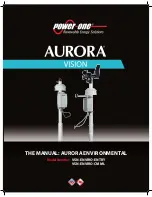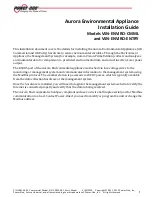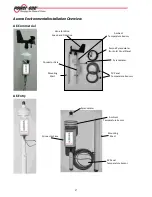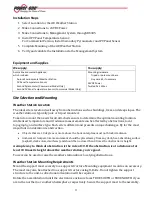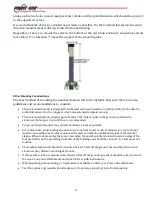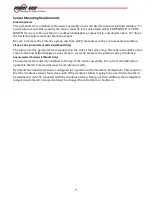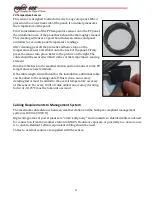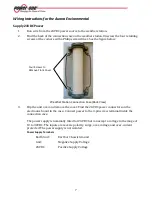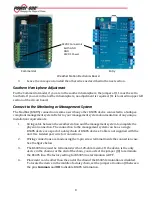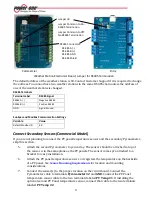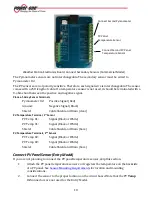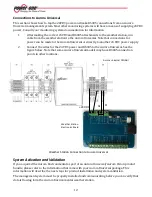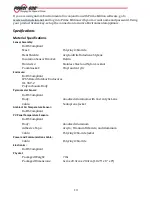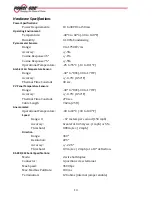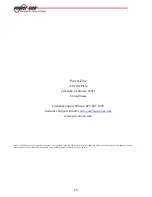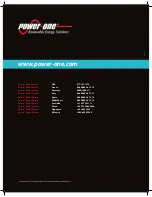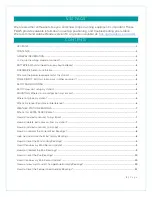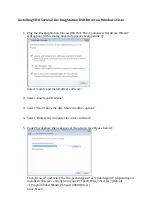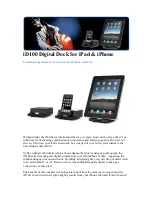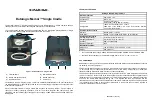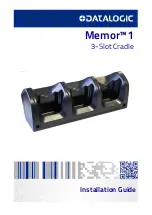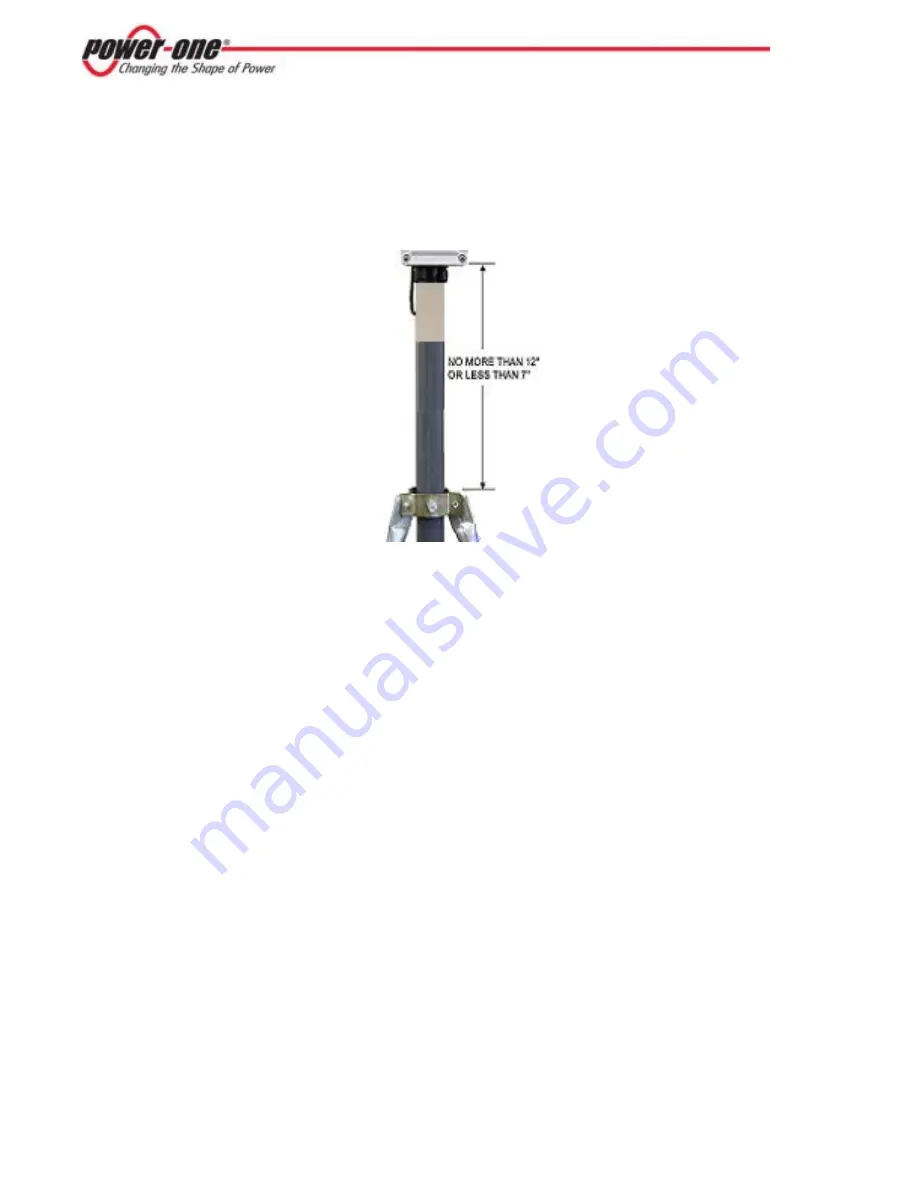
4
Lining up the two holes in each mast prevents rotation. At this point the entire unit should be secured
to the support structure.
It is crucial that the device be oriented as precisely as possible. For the Commercial version, the wind
direction measurement is directly related to this positioning.
Regardless of how you mount the system, the bottom of the electronic enclosure should not extend
more than 12” or less than 7” above the support of the mounting tube.
Other Mounting Considerations
The exact method of mounting the weather station is left to the installer. However, there are some
guidelines and recommendations to consider.
•
The environmental unit is designed to withstand very harsh weather conditions. Refer to the data for
individual sensors for the ranges at which measurements remain accurate.
•
The environmental unit weighs approximately 7 lbs. Pole mounts in the ground or attached to
structures that support up to 50 lbs are recommended.
•
For ground tripod mounts, the ground should be as level as possible.
•
For roof mounts, avoid locating the station near any heat sources such as chimneys or vents. Do not
install on an existing mast unless you know the mast can take the additional weight of the weather
station. When roof-mounting the sensor assembly, the unit should be mounted toward an edge of the
roof preferably on the prevailing wind side of the building and should be at least 2-1/2 feet above the
roofline.
•
The weather station unit should be mounted at least 5 feet off the ground. Surrounding terrain and
structures may dictate a much higher mount.
•
If the weather station is mounted more than 10 feet off the ground, guy wires should be used to secure
the mount. Guy wire attachments must not interfere with instruments.
•
Wall-mounting, pole-mounting, or tripod kits are available. Contact your Power-One distributor.
•
Test the system at ground level and make sure it operates properly prior to final mounting.

